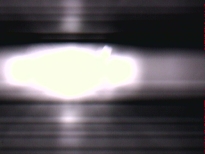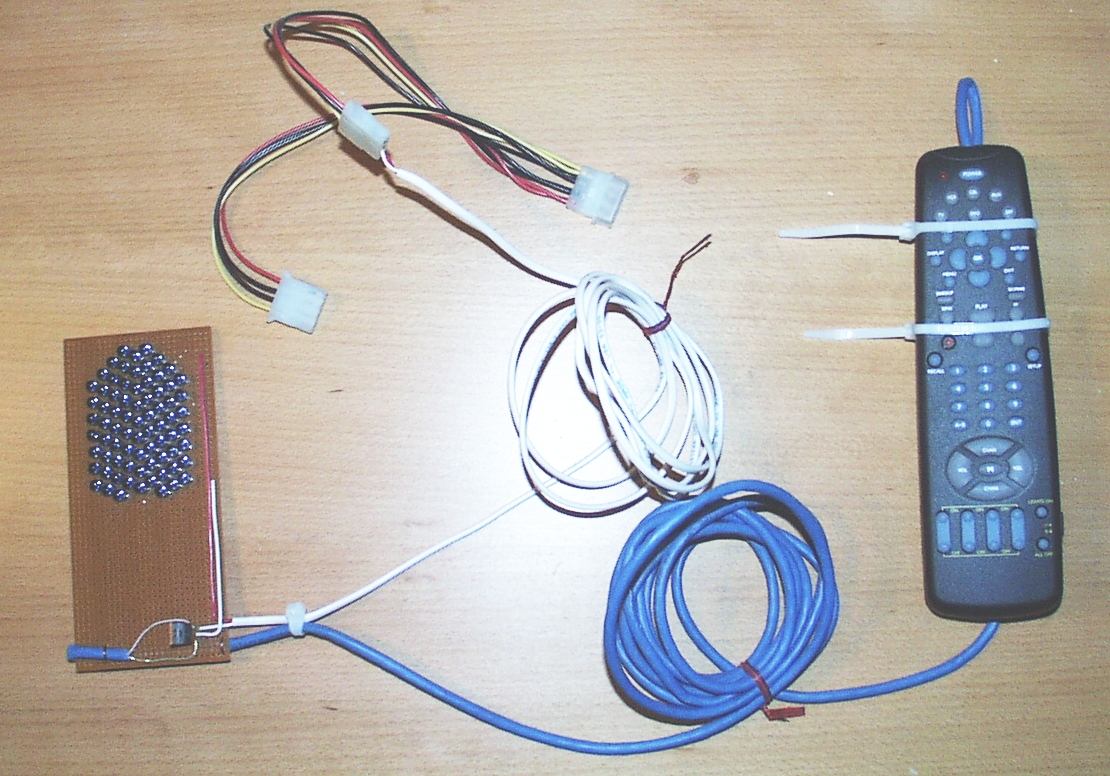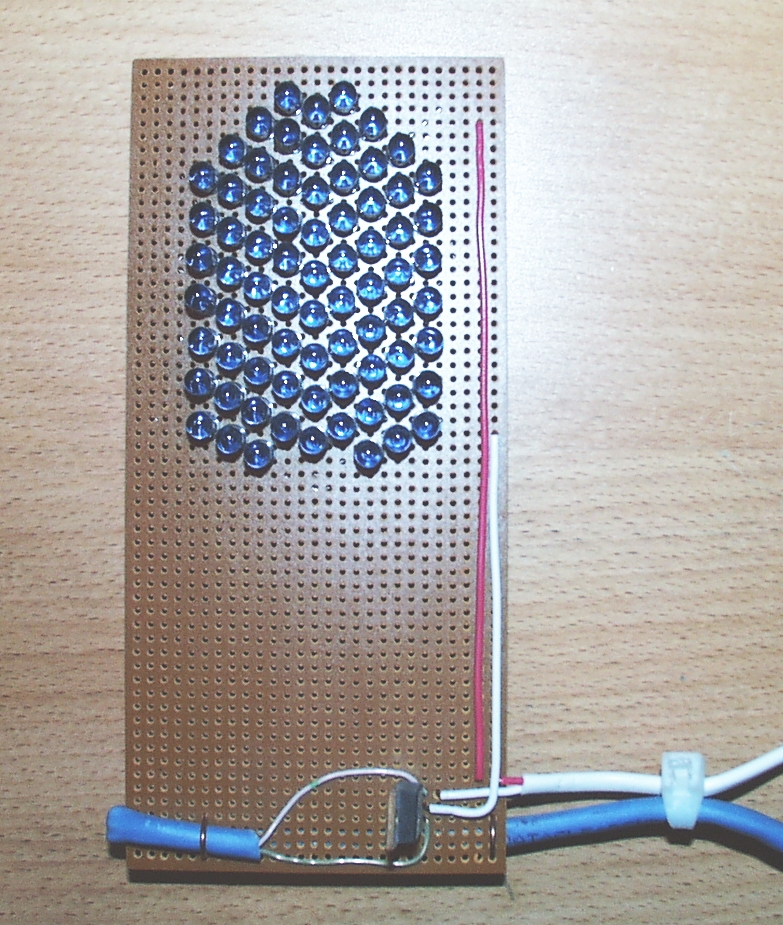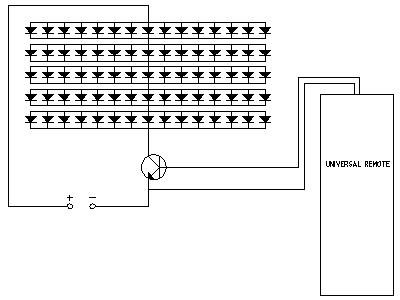 |
 |
 |
 |
 |
 |
 |



 |
||||||||||||||||
 |
Super Remote When I first moved to Denver, I had some seriously jackass neighbors. They routinely played their music at crazy volumes and had band practice at their house at all hours of the night (no joke). Nothing stopped them, including a $150 ticket from the police. I had to do something, so I decided to supercharge a universal remote. I had a universal remote from X10.com which had a search feature. It could be put into search mode where everytime you hit the 'channel up' it would advance to the next code that it knew and emit the channel up signal. So, when your tv changed channel, you knew you'd found the right code. I figured if I could make the IR emmitter on the remote bright enough, I could control their appliances from my house (our windows were approximately 6 feet apart). So, after much research, here's what I came up with. I ran Cat5 from the Universal Remote to a perforated solder board. Only 2 of the wires are used in the Cat5. I removed the IR LED from the super remote and soldered in the 2 wires from the Cat5 in its place. On the other end, the positive wire goes to the Base on a transistor. The other wire goes to the negative on the power supply. On the perfboard is an array of IR LEDs and a high power, high frequency transistor. The transistor is needed because the remote can't possibly supply enough juice to run 75 high power IR LEDs. First I started the search for the IR LEDs. Naturally, I want the brightest out there, which happens to be the TSAL6100. Go ahead and do the research, but these things are far brighter than anything else out there. I found them for cheap (about half price compared to other vendors) at mouser.com. The LEDs are arranged as 5 serial arrangements of 15 LEDS in parallel. Now, most people will tell you that you have to put a current limiting resistor in series with your LEDs so that they don't draw too much current and fry themselves. Usually that's true. In this case, however, I chose to forgo that for 3 reasons: 1. I'm using an ATX power supply to drive this, and they're pretty darn good at keeping the voltage constant. 2. This arrangement of LED's conveniently matches the voltage/amperage I want. 2. Since we're flashing the LED's at high frequency (see below), we can jam alot more juice through them during each burst w/o worrying about frying the LEDs, so, if a little too much juice gets through, we should still be ok. Now the transistor needs to be rated for as much current as the LED array will draw and it also needs to be able to operate at or above the frequency that the remote control signal is sent. Some research found that IR signals are modulated (to avoid interference) and the modulation is usually between 30 khz and 60 khz. I chose the MJE3055T which can operate up to 2 mhz and can handle 10 amps across the emitter and collector. I also got this from mouser.com. Now, put it all together. Here's the schematic. And that's it. As you can see in the picture, I just plugged the power leads into a standard PC power connector extender/splitter, which I then plugged into my 300 watt ATX power supply. Power up the power supply and you should be able to control your TV from across the street. But, before you solder it all together, get a breadboard and test your circuit. Now, I should say, that I had issues with mine dying frequently. I think it was because it was drawing just a smidge too much current from the powersupply and it's internal breaker would trip. FYI, most cameras (particularly cheap ones) can see IR. So, if you're wondering if your super remote is working, point it at your webcam and see if it lights up. Mine sure does. Below is a pic of a standard remote IR LED in operation and the super remote IR LED array in operation. Quite a difference, eh? 

So, here's the parts list:
Have a comment or suggestion? |
 |
||||||||||||||
 |
||||||||||||||||



